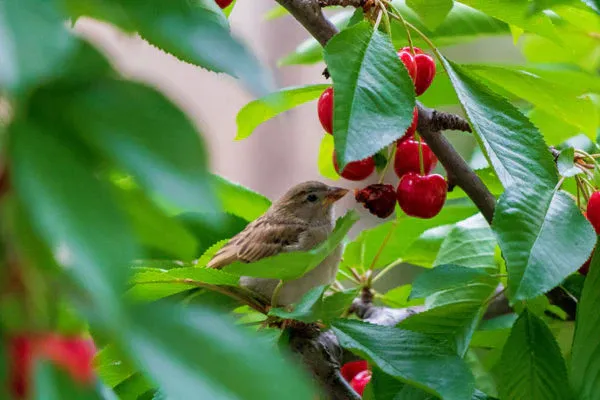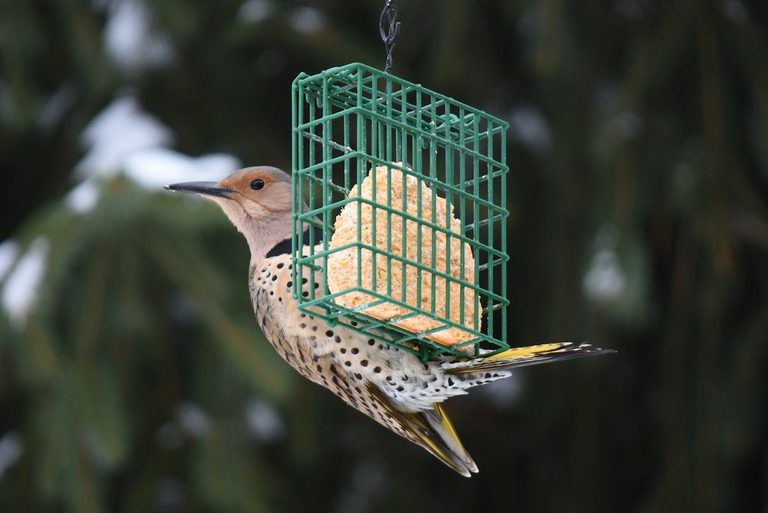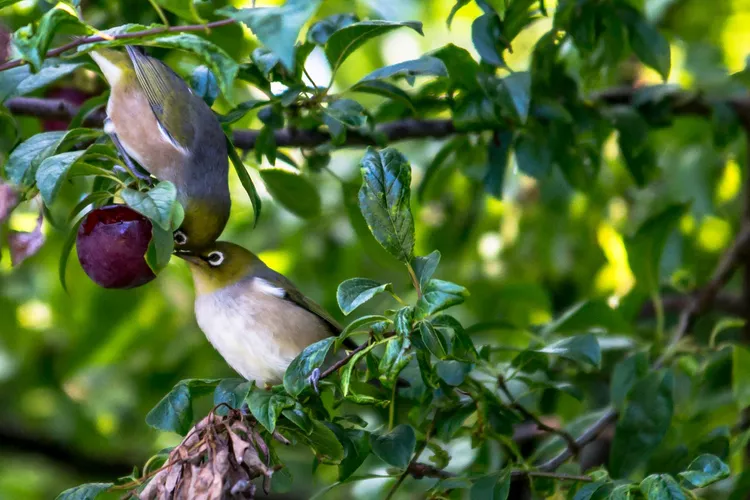While seeds remain the primary energy source for many birds, fruits have become a great choice. There is an entire group of fruit-eating birds referred to as frugivorous birds. If you don't start offering fruits in your backyard, you'll miss out on attracting many birds. So, we are here to respond to this inquiry. Which fruits do birds consume?
However, does this imply that we may now feed birds any fruits found in our kitchen?
Not exactly, no. Only a few fruits can be fed to birds without endangering them.

Types of Fruit Consumed by Birds
Birds can consume a wide range of fruits. Many fruits suitable for human consumption are also ideal for birds. Does this imply that we may now feed birds any fruit found on our kitchen counter?
You should stick to the following fruits when feeding birds.
Bananas
Due to their sweet and tender flesh, bananas are one of the fruits that birds return to repeatedly. Even if they are merely chopped and placed in a platform feeder, birds will readily consume them. However, you should also be aware that most birds prefer mashed bananas because they are easier to eat.
Bananas are a rich source of nutrition for birds. The fruit's magnesium, vitamin B, iron, and vitamin A contribute to birds' health. It also contains a small amount of fiber, which aids in digestion.
Berries

If you were to think of irresistible bird treats, berries would be the best option. These fruits are one of the primary sources of calories and nutrients for birds during the winter, making them one of the most recommended fruits to plant around your home.
The following berries are highly recommended for planting or offering to birds:
- Elderberries: These berries will attract numerous birds to your yard. In addition, nectar is a super food for birds due to its high vitamin A, B, and C content.
- Mulberries: These are native to the United States and are an excellent food source for birds during the summer. It is rich in nutrients, such as vitamins K and C, iron, calcium, potassium, and phosphorus.
- Blueberries: There are other trees native to the United States that are ideal for planting in your backyard. They contain vitamins C, B6, and A, potassium, and numerous antioxidants that maintain birds' health.
- Raspberries: If you enjoy watching towhees and sparrows, planting raspberries will help you attract them. In addition to sheltering birds, when necessary, the plant is rich in vitamins and antioxidants.
- Strawberries: Do you consistently stock strawberries in your kitchen? Like other berries, these are rich in vitamins and antioxidants, making them a nutritious food source for birds. You may offer some to the birds that frequent your bird feeders.
- Blackberries: These are other common berries that can be offered to birds. The plant can be invasive in some regions, so care must be taken if you decide to plant it. If not, you can purchase some at the store and feed them to the birds weekly.
The berries are rich in beneficial bird nutrients, including antioxidants, vitamin C, fiber, and vitamin A.
Apples
Apples are tasty and nutrient-dense, so they are always in our kitchen. And as it turns out, this fruit is not only healthy for humans but also birds.
Apples are rich in vitamins A and C, magnesium, and potassium, which are highly beneficial for birds because they maintain optimal body function. The fruit also contains a small amount of fiber, which aids digestion, and is an excellent source of protein.
Despite the fruit's nutritional value, it should be offered as a treat to birds. Like bananas, apples contain sugar, which harms birds when consumed excessively.
When feeding apples to birds, ensure they are thoroughly washed and cut into manageable pieces. It is acceptable to leave the skin on, but you must remove the seeds before feeding the fruit to birds.
Grapes
Grapes are another favored food for birds. Because they are smaller, birds can quickly identify them. They are also extremely sweet and contain high fructose, which can provide birds with energy.
Like the other fruits on this list, grapes are an excellent source of vitamins, potassium, and fiber, promoting the birds' health. However, feeding birds with grapes must be limited to once or twice a week.
Due to their high sugar content, grapes can cause birds to gain weight, making it more difficult for them to fly and survive.
Oranges
Oranges are the last but not least item on the table.
Numerous birds, including finches, and cardinals, enjoy oranges. One bird, however, cannot resist this fruit: the oriole. If you wish to attract orioles, you can hang oranges or anything orange-colored in your backyard.
Vitamin C, abundant in oranges, can help a bird's immune system. Cut them in half and place them in a platform or orange feeder to serve.
How to Provide Fruits to Birds?
Now that you know what fruits to offer birds, let's discuss how to serve them.
Fruit Trees, Bushes, and Shrubs Should be Planted
Cultivating safe berries for all wildlife to consume is essential, so you do not endanger anyone. You can begin by planting some in your backyard to attract birds with fruit. Berries are an excellent starting point.
You may also plant fruit trees, such as cherries, and vines, such as grapes.
Once fruit-bearing plants have been established in your backyard, avoid or minimize the use of pesticides and herbicides. These chemicals are toxic to birds and can poison them if they consume berries containing them.
Utilize Platform Feeder
You can also place fruit slices on a platform feeder for the birds to consume.
You must thoroughly wash the fruits and cut them into sizes that birds can quickly grasp and consume. There is no need to remove the skin. Slice the fruit, place it on platform feeders, and wait for the birds to devour it.
It is possible with apples, grapes, bananas, and possibly larger berries.
Use a Suet Cage
The issue with platform feeders is that they are accessible to all animals. Placing the fruits in a suet cage is a good idea if you want to feed or attract only the smaller songbirds.

Create a DIY Fruit Feeder
DIY fruit feeders are standard, particularly if you want a feeder to hold a particular fruit. That is common among bird watchers who enjoy luring orioles with oranges.
If you're interested in making a bird feeder, here's an idea you might enjoy.
Fruit Garland Bird Feeder
- It is a simple task. You will only need fruit slices, thread, and a needle.
- Start by deciding how long you want the garland to be; the standard minimum length is three feet, allowing you to include many fruits. Cut a thread twice as long as the desired garland length, then fold it to make it thicker.
- Attach the needle to the thread's edge and begin threading the needle through each fruit. Alternate between the fruit slices, such as apples, grapes, and oranges, before returning to apples. You can create a colorful garland in this manner.
- After completion, cut the thread at the needle and tie a knot. Your wreath is now complete!
- Locate a location in your backyard and wait for the birds to consume them.
- You can make an identical version of this dish using only oranges. It suffices to use a wire in place of a needle. Oranges are sliced and inserted through the wire, and the feeder is hung in the backyard.
- An orange feeder will make it easier to attract orioles.


